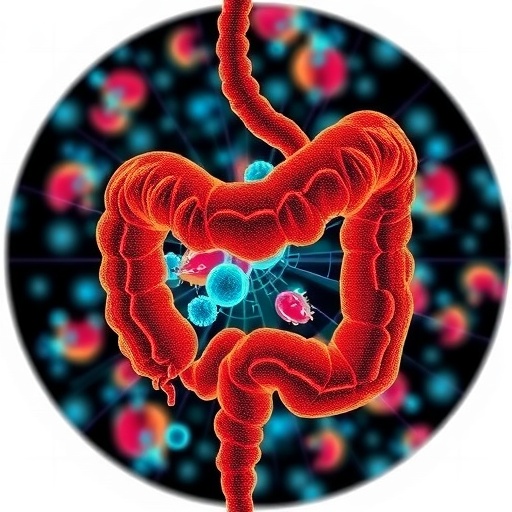In the relentless quest to conquer cancer, one of the most formidable challenges lies in the complex interplay between tumors and the immune system. Chimeric antigen receptor T-cell (CAR-T) therapy has revolutionized treatment for certain blood cancers but remains largely ineffective against solid tumors due to the intricate tumor microenvironment that impedes immune cell infiltration and function. Now, a groundbreaking study unveils a microengineered “tumor-on-a-chip” platform that meticulously recreates this hostile environment, offering unprecedented insights into CAR-T cell dynamics within solid tumors and paving the way for revolutionary advancements in cancer immunotherapy.
This innovative system is poised to become a game-changer by addressing the critical limitation of current CAR-T therapies—their inability to effectively penetrate and operate within solid malignancies. Using human tumor explants derived from lung adenocarcinoma patients, the researchers created a vascularized, perfusable microenvironment on a chip that faithfully mimics the spatial and biochemical landscape of real tumors. The platform not only simulates the architecture of tumor vasculature but also enables controlled introduction and dynamic observation of CAR-T cells as they navigate and engage cancer cells in real time.
At its core, the tumor-on-a-chip leverages microengineering techniques to cultivate human tumors with a functional microvascular network, painstakingly recreating the nutrient flow and immune cell trafficking found in human physiology. This vascularization is critical; it supplies oxygen, nutrients, and signaling molecules, while facilitating immune cell infiltration—factors often absent in conventional culture models. The system’s capability to deliver immune cells via perfusion channels mimics natural trafficking through blood vessels, offering a true-to-life context for studying immune interactions rarely achievable in static, two-dimensional assays.
In experiments with lung adenocarcinoma tumor explants, the researchers visualized CAR-T cells navigating through the vascularized tumor landscape, tracking their movement, activation, and cytotoxic activity with high spatiotemporal resolution. This allowed the team to dissect how CAR-T cells overcome physical and immunosuppressive barriers characteristic of solid tumors. The study’s findings highlighted both the potential efficacy and the current limitations of CAR-T cells, revealing nuanced cell behaviors linked to tumor matrix composition, immune checkpoint expression, and metabolic constraints.
Building upon their success modeling lung adenocarcinoma, the team applied their platform to malignant pleural mesothelioma, another aggressive solid cancer notorious for its resistance to immunotherapy. Here, they tested a novel chemokine-directed CAR-T cell engineering strategy designed to enhance immune cell homing to tumor sites. By modifying CAR-T cells to express specific chemokine receptors, the researchers observed improved infiltration and tumor targeting on the chip, outcomes further validated in a complementary in vivo mouse model. This seamless integration of in vitro and in vivo validation emphasizes the platform’s utility for preclinical testing and personalized therapy optimization.
One of the most compelling aspects of this technology lies in its ability to reveal actionable therapeutic insights. Through global metabolomics analysis conducted on lung adenocarcinoma tumor explants cultured on the chip, the researchers identified distinct metabolic signatures that correlate with CAR-T cell efficacy. These findings uncovered potential metabolic checkpoints that could be pharmacologically targeted to augment CAR-T cell function. The identification of such metabolic vulnerabilities opens new avenues for combination therapies that could surmount tumor immunosuppression and resistance mechanisms.
Beyond immunotherapy, the tumor-on-a-chip represents a versatile tool for studying tumor biology under physiologically relevant conditions. It provides researchers a window into the dynamic interplay between cancer cells, stromal cells, immune populations, and the vascular niche within a controlled environment. This precision modeling can dramatically accelerate drug discovery, biomarker identification, and mechanistic studies, minimizing dependency on animal models and potentially revolutionizing personalized medicine approaches for solid tumors.
This work exemplifies the power of bioengineering to transcend conventional biological modeling, merging microfluidics, tissue engineering, and immunology into a unified platform. The tumor-on-a-chip system addresses longstanding hurdles in cancer research by bridging in vitro studies with clinical realities, thereby enabling a deeper understanding of immune resistance and therapeutic response patterns. Such sophisticated tools are indispensable as science moves toward the goal of engineering next-generation cell therapies tailored to the unique architecture and biology of individual tumors.
Additionally, the real-time visualization capabilities afforded by the platform elucidate critical stages of CAR-T cell function, from extravasation, migration, and tumor recognition to killing and exhaustion dynamics. Observing these processes in uninterrupted detail permits fine-tuning of CAR design, dosing strategies, and combination regimens much earlier in the development pipeline. This has profound implications, reducing costly late-stage failures in clinical trials and improving patient stratification strategies.
The platform also holds promise for expanding research into tumor heterogeneity—a significant factor in treatment resistance. By maintaining patient-derived tumor tissues with their intrinsic cellular diversity and microenvironmental features intact, the tumor-on-a-chip can capture how different cancer subpopulations respond variably to immunotherapy. This capability could guide the development of multi-pronged therapeutic strategies, integrating CAR-T cells with small molecules or biologics that target tumor complexity from multiple angles.
Furthermore, the innovation supports exploration of immune-suppressive elements such as regulatory T cells, myeloid-derived suppressor cells, and inhibitory checkpoint molecules within intact tumor ecosystems. Dissecting how these components interact with CAR-T cells in a native-like environment can reveal novel checkpoints for intervention. The ability to pharmacologically modulate these pathways and monitor CAR-T cell response offers a powerful feedback loop for optimizing treatment regimens.
Importantly, the study demonstrates that this microphysiological system is scalable, reproducible, and compatible with high-resolution imaging and omics analyses, positioning it as a robust platform for both academic and industrial research. Its adaptability allows incorporation of different tumor types, CAR constructs, and immune cell populations, making it a broadly applicable technology in the fight against cancer and other immunological diseases.
As the field advances, integration of this tumor-on-a-chip technology with artificial intelligence and machine learning could further enhance predictive modeling of CAR-T cell behavior, providing clinicians with sophisticated tools to customize therapy on a patient-by-patient basis. The convergence of engineering, immunology, and computational analytics heralds a new era in precision immunotherapy, where treatments are dynamically optimized based on real-time feedback from patient-derived tissue models.
In summary, this pioneering tumor-on-a-chip system marks a monumental step forward in overcoming the formidable biological barriers that have long stymied CAR-T cell efficacy in solid tumors. By faithfully replicating the tumor microenvironment and enabling detailed interrogation of immune cell function, it offers a transformative platform to accelerate research, improve therapeutic strategies, and ultimately bring the promise of CAR-T and other adoptive cell therapies to a broader range of patients suffering from solid cancers.
Subject of Research: Development of a microengineered tumor-on-a-chip platform to model and study CAR-T cell immunotherapy efficacy in human solid tumors.
Article Title: A tumor-on-a-chip for in vitro study of CAR-T cell immunotherapy in solid tumors.
Article References:
Liu, H., Noguera-Ortega, E., Dong, X. et al. A tumor-on-a-chip for in vitro study of CAR-T cell immunotherapy in solid tumors. Nat Biotechnol (2025). https://doi.org/10.1038/s41587-025-02845-z
Image Credits: AI Generated
Tags: cancer immunotherapy innovationscancer treatment breakthroughsCAR-T cell dynamics studyCAR-T therapy advancementshuman tumor explants useimmune cell infiltration challengeslung adenocarcinoma researchmicroengineered tumor platformsreal-time tumor interactionssolid tumor microenvironment modelingtumor-on-a-chip technologyvascularized tumor models





